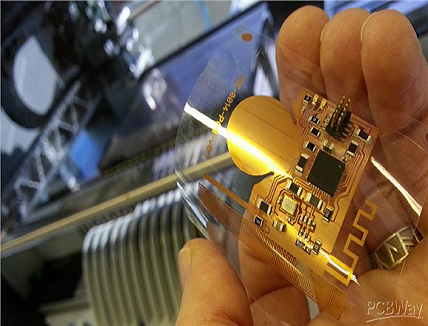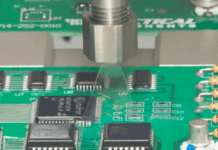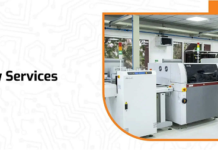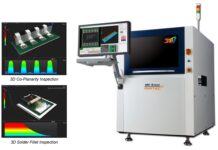
With the fast pace of changing technology, electronic devices are shrinking in form factor. But it does not mean shrinking the size of a regular rigid Printed Circuit Board. In fact, transferring the circuit to a flexible PCB or using a Flex PCB Design give much more benefits to the designer in making the best use of limited space inside the device.
The introduction of Flex PCB Technology has enhanced product design by offering freedom to the designer to make durable, lightweight, space-saving and cost-effective products. In this article, we will explain the Benefits of using a Flex PCB Design, what are its application areas in the electronics sector and from where you can buy the best Flex PCBs for your design needs, but before that let us have a look at what these Flexible Circuit Boards are.
What are Flexible Circuit Boards or Flex PCBs?
Flex PCBs or Flexible Circuit Boards are printed circuit boards manufactured using a naturally flexible substrate and a polyimide material, consisting of layers of copper. As the name suggests, these flexible PCBs have high flexibility and tensile strength that allow them to be easily moved and bent without creating any damage to the conductor. They provide excellent electrical performance and can be moulded into 3-dimensional shapes for use in a variety of applications such as Aerospace, Medical, Automotive, Consumer Electronics etc.

Benefits of using a Flex PCB Design
As they are made up of flexible insulating substrates, Flex PCBs unlock many benefits for the designers and offer significant manufacturing advantages such as:
- Reduced & Simplified Assembly Costs: The overall manufacturing cost of the product is reduced as a rigid-flex PCB reduces the board-to-board connectors and solder joints. The bulky wiring is eliminated as it can replace wire harnesses with small flexible cables. Hence, this results in not only reducing the labor costs of the assembly but also the wire cost along with a reduction in production errors.
- Reduced Space and Weight: Flexible Circuit Boards have the ability to reduce the weight and size of electronics products making them ideal for miniaturized, high-reliability and high-density products. Packaging and space weight are important factors in a PCB design. By using a Flex PCB Design, the package size is significantly reduced as the Flexible Circuits eliminate the solder connection and bulky wire.
- Dynamic flexing: Flexible circuits can meet dynamic flexing requirements as they can withstand millions of flexes when designed properly. Flex PCBs can be freely folded, bent, and arranged accordingly to the layout requirements of the space. They have the capability of bending 360 degrees and can be expanded and moved in any space providing a three-axis connection.
- Improves aesthetics of the product: The improved aesthetics or the appearance of the product also has a great impact on the user’s buying decisions. The sleek and space-saving flex circuit with a compact and lightweight design can become the instant choice of the designer for designing a miniature electronic device.
- Thermal Management: The Flex PCB Designs have the capability to withstand higher temperatures as they are made up of Polyimide materials that can tolerate high heat applications. Due to their good temperature range, they can withstand several types of disruptions in harsh environments.
- Increased reliability: Replacing a rigid PCB with a Flex PCB simplifies the design of the system by lowering the number of required interconnections and also increases reliability. Being bio-compatible in nature these PCBs can be regularly used for medical and wearable applications.
Applications of Flex PCBs
Flex PCBs are used in a wide variety of applications such as:
- Automotive: Flex PCBs are widely used in automotive electronic components. They are used for car displays, battery management systems, LED car lights, navigation, sensors, entertainment systems and other devices in vehicles.
- Commercial Electronics: Flexible PCBs are used as part of signal connection for rotating, folding hinge parts in smartphones. These are used in OLED (Organic Light Emitting Diode) displays and are ideal for electronic products that use flexible screens, curved displays, and folded phones.
- Medical and Wearable Devices: Due to their flexibility and high circuit density Flex PCB enables many medical wearable devices to become smaller, lighter and smarter and provide greater durability.
- Aerospace: Flexible PCBs have a great capability to handle extreme vibrations and temperatures. These characteristics make them very suitable for the aerospace applications such as satellites and their ability to take any shape is well-suited for spacecraft design.
The Flexible Circuit Boards allow better airflow and for high-speed circuitry, it provides uniform electrical characteristics. All these characteristics of a Flexible Circuit Board make them a better choice over the traditional and rigid PCB.
However, if you are looking for top-quality flexible printed circuits that meet your specifications and budget, then you must definitely check out the Flex PCBs by PCBWay as they are offering $46.74 for 1-2 layers FPC. For more information and to buy Flex PCB visit: www.pcbway.com

















